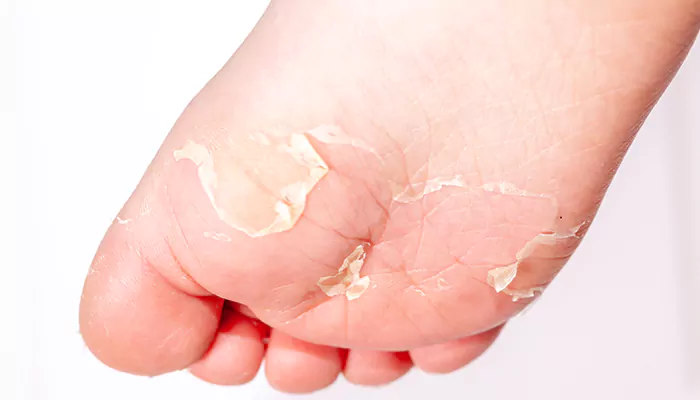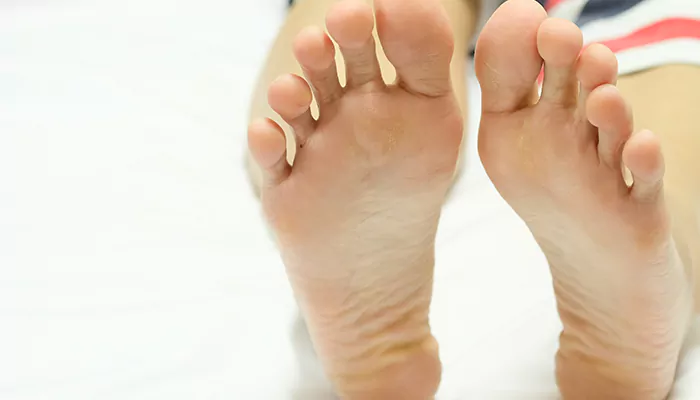
Discover effective strategies for managing and preventing peeling skin on your feet in this article.
Our feet often get neglected during skincare, yet they are crucial for our mobility. They endure a lot of wear and tear on a daily basis. From standing and walking to exposure to various environmental factors, our feet are susceptible to a range of issues, including peeling skin. Peeling skin on the feet can be unsightly, uncomfortable, and even painful if left untreated. Understanding the causes and knowing how to effectively manage this common problem is essential for maintaining healthy, happy feet. Read on to know more!
Identify the Cause
Peeling skin on the feet can be triggered by various factors, including dry skin, fungal infections such as athlete's foot, eczema, psoriasis, or allergic reactions to certain substances. Identifying the underlying cause is crucial for determining the most appropriate course of action. If you're unsure about the cause of your peeling skin, consulting a dermatologist or healthcare professional can provide valuable insights.
Practice Proper Hygiene
Good foot hygiene is essential for preventing and managing peeling skin. Wash your feet daily with warm water and a mild soap. Make sure to thoroughly dry them afterward, especially between the toes where moisture can accumulate. Avoid using harsh soaps or hot water, as these can further strip the skin of its natural oils and exacerbate dryness.
Moisturize Regularly
Keeping the skin on your feet well-hydrated is key to preventing peeling. Apply a rich moisturizing cream or lotion to your feet daily. Pay extra attention to areas prone to dryness such as the heels and soles. Look for products containing ingredients like shea butter, glycerine, or hyaluronic acid, which help to lock in moisture and restore the skin's natural barrier.
Exfoliate Gently
Exfoliating your feet can help remove dead skin cells and promote cell turnover, reducing the likelihood of peeling. Use a gentle exfoliating scrub or pumice stone to slough away rough, dry patches of skin. But be careful not to overdo it, as excessive exfoliation can cause irritation and further damage the skin.
Protect Your Feet
Avoid walking barefoot in public places, especially in damp environments like swimming pools or locker rooms, to reduce the risk of fungal infections. Wear moisture-wicking socks and breathable shoes to keep your feet dry and comfortable. Consider using foot powder or antifungal sprays if you're prone to fungal infections.

Treat Fungal Infections Promptly
If your peeling skin is caused by a fungal infection such as athlete's foot, it's important to treat it promptly to prevent it from worsening. Over-the-counter antifungal creams, sprays, or powders can help to eliminate the infection and relieve symptoms like itching, redness, and peeling. If over-the-counter treatments aren't effective, consult a healthcare professional for further evaluation and treatment options.
Avoid Harsh Chemicals
Be mindful of the products you use on your feet, as harsh chemicals can exacerbate dryness and irritation. Avoid using strong soaps, detergents, or skincare products containing alcohol or fragrances, as these can strip the skin of its natural oils and cause further damage.
Stay Hydrated
Hydration is essential for maintaining healthy skin, so make sure to drink plenty of water throughout the day. Dehydration can contribute to dry, flaky skin, so aim to drink at least eight glasses of water daily to keep your skin hydrated from the inside out.

Dealing with peeling skin on your feet can be frustrating, but with the right care and attention, it's often manageable. If you're unsure about how to manage your peeling skin or if it persists despite home remedies, don't hesitate to seek advice from a healthcare professional. Your feet deserve the best care, so prioritize their health and well-being for happy, comfortable steps ahead.












